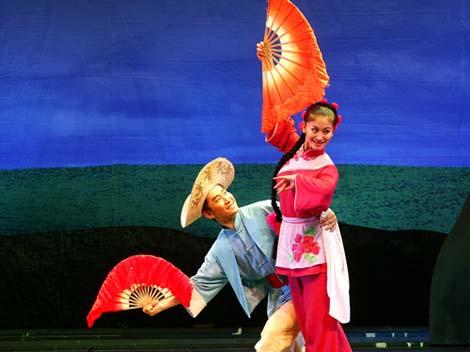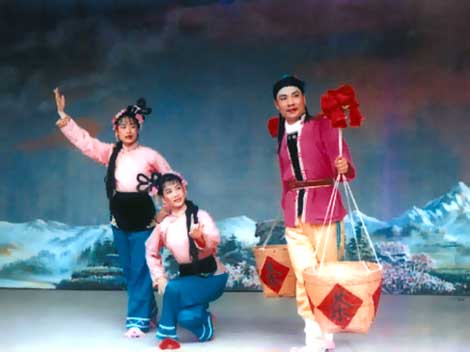
Tea dance is a dancing art featuring the subjects and contents of tea production and tea drinking. It is a cultural phenomenon derived from the mainstream culture of tea production and drinking.
There are two major types of tea dance, namely, the tea-picking dance and tea lantern dance. Tea dance is very common in the provinces including Zhejiang, Jiangxi, Anhui, Jiangsu, Fujian, Hunan, Hubei, Sichuan, Guizhou and Yunnan, and is a major activity for celebrating the Spring Festival and the Lantern Festival among people. Many operas in China are named after tea, such as the Jiangxi Tea-picking Opera, Hubei Tea-picking Opera, Guangxi Tea Lantern Opera and Yunnan Tea Lantern Opera, which were gradually developed on the basis of tea songs, dances and music created by people living in tea-growing regions.

Moreover, the tray dance and dage (literally, beat songs, a folk entertainment featuring song and dance) prevalent in some ethnic groups of China also feature the contents of serving and drinking tea, which can be deemed as a kind of tea dance from a certain angle. For example, when the Yi minority performs their folk dance after the guests are seated, all people, young and old in the village or family hosting the folk dance, will send a tea tray or wine tray to their guests in a respectfully dancing manner to the music of gong and Suona and then withdraw.
We Recommend
